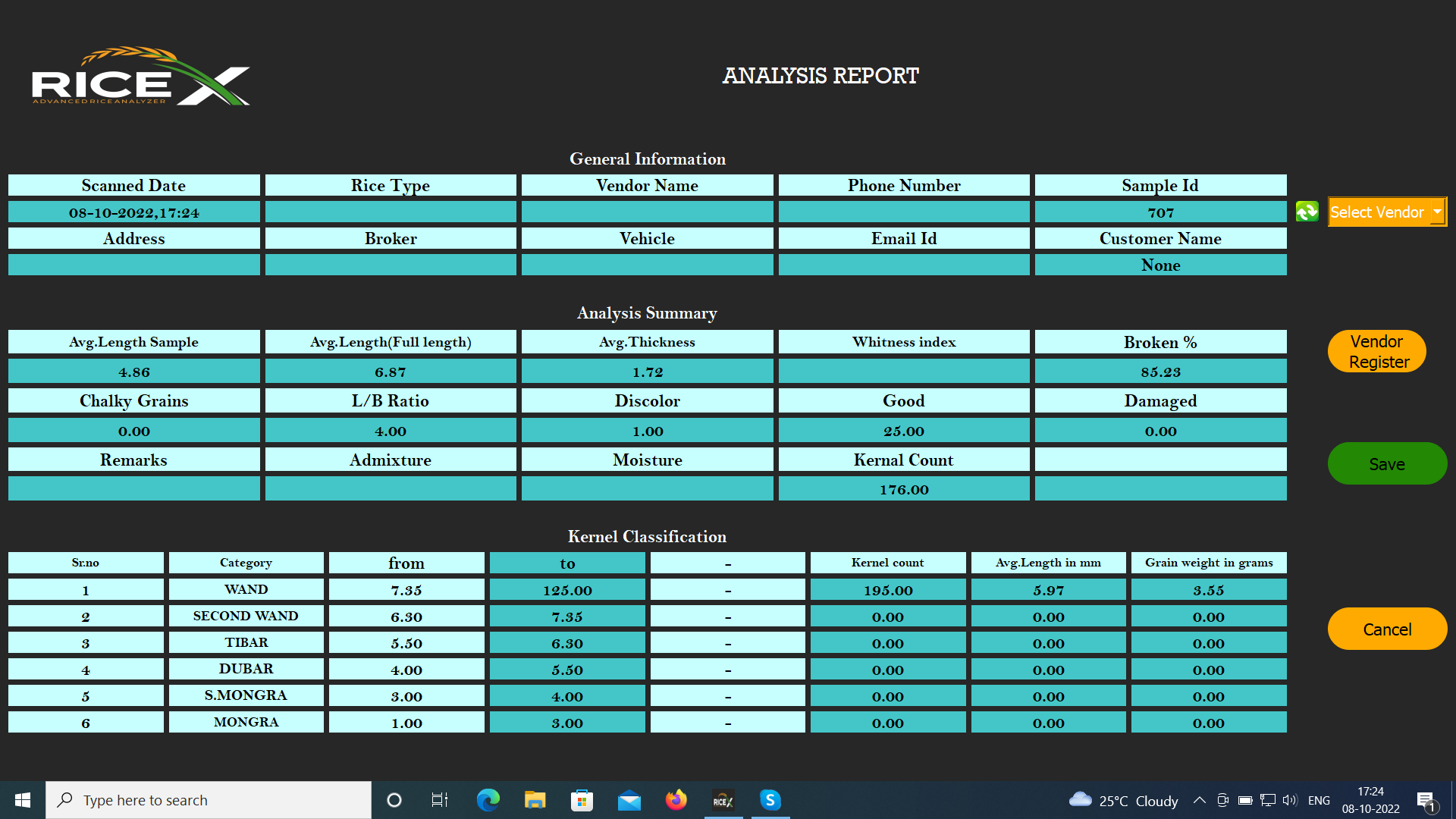
Since rice is typically eaten as whole grain in nations where it is a staple diet, its grain quality is more complicated than that of other cereals. Milling, physical appearance, cooking, sensory, palatability, and nutritional value are among the key factors that affect market pricing. For the purpose of creating novel breeding techniques, a deeper comprehension of the variables influencing these quality features will be helpful. This blog will discuss the steps taken to improve significant grain quality traits and their genetic underpinnings with the help of RiceX Rice Quality Analyser software.
The knowledge gathered through novel methods that integrate high yield and grain quality in the current setting of depleting natural resources and changing environmental conditions will also be innovatively analysed in this article.
Rice Quality Traits
Appearance quality
Physical characteristics including whiteness, translucence, regular shape, and production of edible polished grain are important aspects that customers can identify right away. The visual characteristics of rice grains, such as grain size, chalky, colour, and whole grain recovery are significant factors that influence consumers and millers preferences. Therefore, in varietal improvement projects, these are among the initial selection criteria.
The length of the grain in its largest dimension determines grain size, whereas the length to width ratio determines grain shape. Rice samples are not consistently categorised according to size and form across nations and marketing sectors. The International Rice Research Institute (IRRI) breeding programmes regularly classify grain size into four categories: short (5.50 mm), medium/intermediate (5.51-6.60 mm), long (6.61-7.50 mm), and extremely long (>7.50 mm). Similar to this, the length-to-breadth ratio values can be used to define the forms of rice grains. According to IRRI, these shapes are bold (2.0), medium (2.1-3.0), and thin.
Chalky areas in rice grains are opaque white parts of the endosperm that are typically associated with poor quality in many rice markets, which lowers the market acceptability of these grains [24]. Chalky areas can be found on the dorsal (white belly), ventral (white back), or central surfaces of rice grains. According to how much of the grain is chalky, the grains are divided into four categories: none (0%), small (10%), medium (10%–20%), and large (>20%).
The fraction of chalky grain is visually scored, and rice grain dimensions are often quantified using transparent rulers, vernier callipers, and picture enlargers . Manual methods need a lot of labour and take a long time to measure grain dimensions. Moreover, subjective judgments are made when scoring chalk visually. Image analysis techniques are being applied in sophisticated labs and are very practical and objective. Moreover, visual scoring of chalky involves subjectivity. Now-a-days, image analysis methods are being used in advanced laboratories that are very convenient and objective.
Milling Quality
Milling yield is a crucial quality characteristic, particularly from a commercial perspective. It contains head rice yield in addition to milled rice yield. The amount of total milled rice that may be generated from a unit of raw rice (paddy) after the hulls and the majority of the bran have been removed is known as the milling yield. It is often reported as a percentage and includes both whole and fractured kernels . Head rice refers to the complete or intact kernels, which includes milled kernels that are at least three-quarters of an inch long.
Broken kernels economic worth is only 50–60% that of head rice, demonstrating the significant effect it has on marketability. The endosperm’s exterior layer, known as the bran, has multiple layers. Bran is the collective term for these layers.The percentage of fractured kernels is influenced by both the degree of milling, which measures how much of the endosperm’s bran layers have been removed, and grain fissuring, which determines the overall milling quality.
Laboratory-scale mills are used to assess milling quality. Dehuskers that remove the husk are among them, as well as polishers, graders, indent cylinders, and shaker tables that separate broken kernels from milled rice.
Therefore, the hundreds of millions of people who depend on rice would receive a huge nutritional boost from a small increase in these levels. Therefore, there is an urgent need to shift the focus to the creation of rice that is of excellent nutritional quality.
Conclusion
Increased urbanisation, urban migration, deteriorating soil conditions, and issues related to climate change all contribute to a loss in adequate arable land, which in turn has an impact on both the quantity and quality of rice. The genetic machinery is too complex and has to be understood, despite the fact that rice eating and cooking quality attributes seem straightforward. The complicated feature of rice appearance quality comprises interactions between yield and environment as well as between quality and quality. Since it affects milling, appearance, eating and cooking properties, grain chalkiness is a major concern. Therefore it makes it all the more important to analyse Visual and milling charateristics of rice with RiceX Rice Quality Analyzer.
